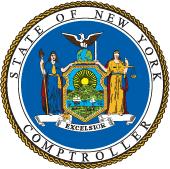Local Sales Tax Collections Up 3.7 Percent in the First Half of 2025
Sales tax collections for local governments and other local taxing entities in New York State totaled $11.9 billion in the first half of 2025, up 3.7 percent ($423 million) over the same period last year. Over the past few years, since the end of the dramatic pandemic-related swings in collections from 2020 to 2022, first-half sales taxes are showing similar patterns of growth as in the years following the recession-related dip in 2009. All of the state’s 10 regions saw year-over-year growth in first-half collections.
